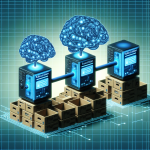Introduction: The Fusion of AI and Customer Journey Mapping
In the digital age, understanding customer behavior has become more critical—and complex—than ever before. Traditional customer journey mapping often falls short of capturing the nuances of modern consumer interactions. Enter Artificial Intelligence (AI): a transformative force enabling businesses to unlock new insights, optimize experiences, and deliver unparalleled personalization at scale.
Why Traditional Customer Journey Mapping Needs a Boost
Customer journey mapping is the process of visualizing a customer’s interaction with a brand across multiple touchpoints. Historically, this meant aggregating data through surveys, interviews, and manual analytics. While still valuable, these methods are limited by subjectivity, incomplete data, and lack of real-time context.
Businesses today are dealing with omnichannel ecosystems, where customers navigate between websites, mobile apps, social media, chatbots, and physical stores. The sheer volume and variety of data have outpaced conventional analytic approaches—this is where AI proves indispensable.
How AI Enhances Customer Journey Mapping
AI technologies such as machine learning, natural language processing, and predictive analytics are revolutionizing the way companies understand and reshape the customer journey. Here’s how:
1. Data Consolidation and Pattern Recognition
AI can aggregate and analyze vast amounts of structured and unstructured data from multiple sources. This includes behavioral data, sentiment from social media, customer service interactions, and transaction histories. Machine learning algorithms identify patterns and correlations that are often invisible to human analysts, enabling brands to spot friction points and opportunities across the customer lifecycle.
2. Real-Time Personalization
With AI, businesses can deliver tailored experiences in real-time. By analyzing user behavior on-the-fly, AI can dynamically modify website content, product recommendations, and targeted messaging. This helps reduce bounce rates, increase engagement, and guide customers more seamlessly through their purchasing journey.
3. Predictive Insights for Proactive Engagement
AI doesn’t just explain the past—it predicts the future. Predictive modeling empowers organizations to forecast customer needs and potential drop-offs before they happen. This foresight allows companies to proactively address pain points, nurture leads, and ultimately improve conversion rates.
4. Automating Touchpoint Optimization
AI-driven tools enable continuous monitoring and optimization of every journey stage. From chatbot interactions to checkout flows, AI can test, learn, and adapt in near real-time, significantly enhancing customer satisfaction across each touchpoint.
Case Studies: AI in Action
Retail: Enhanced Shopping Experiences
Retail giants like Amazon and Sephora use AI-powered recommendation engines to personalize shopping experiences. These systems analyze individual behavior patterns, past purchases, and preferences to curate products likely to resonate with each customer, enhancing satisfaction and loyalty.
Banking: Streamlined Onboarding
Financial institutions are leveraging AI to improve onboarding processes by dynamically adjusting forms, providing instant support through virtual agents, and flagging potential frictions. For example, AI can identify when a customer is struggling with a form and trigger immediate assistance through a chatbot or co-browsing session.
Healthcare: Improving Patient Journeys
Healthcare providers are adopting AI to map and optimize patient journeys—from appointment scheduling to follow-up care. By aggregating clinical data, feedback, and behavioral cues, AI helps design more empathetic, efficient, and personalized patient experiences.
Key Considerations for Implementation
While AI opens new doors, implementing it effectively for customer journey mapping requires careful planning. Here are some best practices:
- Data Governance: Ensure data quality, accuracy, and privacy compliance.
- Cross-Functional Collaboration: Involve marketing, sales, product, and IT teams to create a holistic view.
- Choose the Right Tools: Select AI platforms that integrate seamlessly with your existing tech stack.
- Continuous Learning: AI models improve over time—regularly feed them new data and refine parameters.
The Future of Customer Experience is AI-Driven
AI is not just a technology trend—it’s redefining customer experience as we know it. By intelligently mapping and enhancing customer journeys, AI empowers businesses to move from reactive service models to proactive, predictive engagement strategies. Companies that embrace AI in their customer journey mapping efforts will be better positioned to meet rising expectations, build loyalty, and win in an increasingly competitive marketplace.
Conclusion
Customer journey mapping is evolving from static diagrams to dynamic, AI-powered systems that provide continuous, actionable insight. With AI, businesses gain a 360-degree understanding of customer behavior, personalize experiences at scale, and drive better outcomes across the entire customer lifecycle. The age of uncertainty in customer experience is over—AI is lighting the way.





